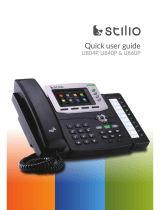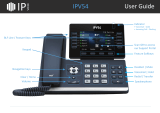
Table of Contents
xi
Recent Call In Dialing.................................................................................................................. 94
Auto Redial .................................................................................................................................. 96
Call Completion .......................................................................................................................... 97
ReCall ........................................................................................................................................... 98
Call Mute ..................................................................................................................................... 98
Call Hold/Resume ....................................................................................................................... 99
Do Not Disturb (DND) ............................................................................................................. 100
Call Forward ............................................................................................................................. 105
Static Forwarding.................................................................................................................. 105
Dynamic Forwarding ............................................................................................................ 112
Call Transfer ............................................................................................................................. 112
Blind Transfer ........................................................................................................................ 113
Semi-attended Transfer ....................................................................................................... 115
Attended Transfer................................................................................................................. 116
Call Waiting .............................................................................................................................. 117
Conference ............................................................................................................................... 117
Local Conference .................................................................................................................. 117
Network Conference ............................................................................................................ 119
Call Park/Retrieve ..................................................................................................................... 120
FAC Mode ............................................................................................................................. 121
Transfer Mode ...................................................................................................................... 123
Call Pickup ................................................................................................................................ 125
Directed Call Pickup ............................................................................................................. 125
Group Call Pickup ................................................................................................................. 127
Anonymous Call ....................................................................................................................... 129
Anonymous Call Rejection ...................................................................................................... 130
Advanced Phone Features ....................................................... 131
Busy Lamp Field (BLF) .............................................................................................................. 131
Configuring the BLF Feature on the IP Phone .................................................................... 131
Using BLF Feature on the Phone ......................................................................................... 136
BLF List ...................................................................................................................................... 138
Call Recording .......................................................................................................................... 140
Configuring a Record Key .................................................................................................... 140
Configuring a URL Record Key ............................................................................................ 141
Recording a Call ................................................................................................................... 141
Hot Desking ............................................................................................................................. 142
Intercom ................................................................................................................................... 143
Configuring the Intercom Feature on the IP Phone ........................................................... 144
Using Intercom ..................................................................................................................... 146
Multicast Paging ...................................................................................................................... 147
Sending RTP Stream ............................................................................................................. 147
Receiving RTP Stream .......................................................................................................... 150
Using Multicast Paging ........................................................................................................ 152





















